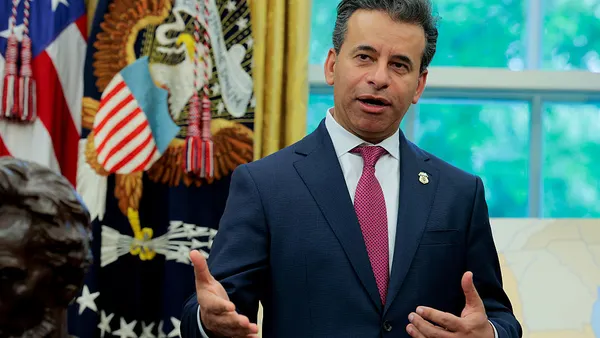President Donald Trump’s threats of 200% tariffs and restrictive pricing policies have jolted the pharma industry into planning for the worst. But with uncertainty still in the air, many companies are mostly hedging their bets.
While pharma giants like Roche and Johnson & Johnson have set aside tens of billions of dollars to establish and expand manufacturing in the U.S., implementation will take years. And without knowing exactly what the tariffs or pricing policy will look like down the road, such large-scale efforts can be risky.
In a June survey of life sciences executives — before Congress enacted a sweeping budget bill — the Deloitte Center for Health Solutions found about two-thirds of company leaders already expected at least some impact on their business.

“There's engagement strategically and some scenario planning around this, but most organizations have not gone to operational executions,” said Jay Bhatt, managing director of the Deloitte Center for Health Solutions. “They're engaged in high-level scenario planning around supply chain, tax and corporate structure, identifying category-level priorities and then acknowledging that there's a need for action — but waiting until that happens.”
Drugmakers are starting to shift from planning to action, Bhatt said, but very few are ahead of the curve. While industry juggernauts like Eli Lilly have taken actions to boost U.S. manufacturing and mitigate tariff impacts, as well as cutting insulin prices to anticipate policy changes, they could become more adaptive through fundamental changes to their business structure, he said.
“Organizations are preparing for uncertainty by pairing big-picture, long-term bets such as reshoring diversified portfolios or digital transformation with practical, near-term levers like supplier negotiations, inventory management and analytics,” Bhatt said. “But they have to be ready to manage through that complexity with agility when so many things are at play.”
To be ready for a potential storm, Bhatt recommends shifting organizational design altogether. For that, he preaches a concept he calls a “quantum corporation.”
Quantum readiness
A physician, Bhatt thinks about corporate readiness how a hospital or a clinic might think about emergency preparedness.
“We don’t wait for the emergency to happen — we’re doing drills every quarter to prepare for that,” Bhatt said. “Similarly, what we’re seeing in the pharma ecosystem is that this is an opportunity to build resilience as an organizational muscle to get through a dynamic time.”
Companies can become more adaptable by operating in “parallel states of readiness” as opposed to a more rigid, wait-and-see approach to regulatory or political changes, Bhatt said.
The concept reflects quantum physics, which takes into account the variability of matter at a fundamental level. In the spirit of quantum mechanics, Bhatt sees more agility in a drugmaker with a free-flow wave form rather than individual silos acting separately.
“Static planning is no longer sufficient — the characteristics of a quantum corporation put continuous strategy recalibration in the middle while these other elements are around it, from supply chain to customs to licensing to tax and resource planning,” Bhatt said. “This allows for rapid intake of external information, distributed processing across business units and real-time feedback loops.”
To achieve this, companies can build a strategy integrating geopolitical, trade, pricing and supply chain variables with short- and long-term modeling on outcomes, assigning a risk score based on real-time data, Bhatt said. Small, cross-disciplinary teams can react quickly to policy changes.
“Continuous learning is an organizational muscle, not just a plan,” Bhatt said. “A playbook of organizational agility will be one of the things that becomes an outcome of this.”
“Regulatory and trade uncertainty is no longer a background concern,” Bhatt said. In today’s complex environment, an agile approach might be what’s needed to survive.













